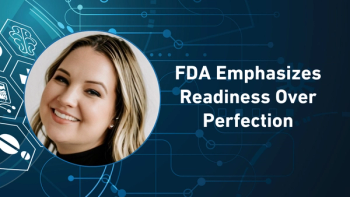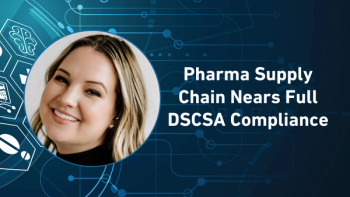
Healthcare Access and Equity: Can Recent Initiatives Improve Affordable Healthcare for All Americans?
Despite support from patient assistance programs and legislation designed to combat growing healthcare costs, challenges remain.
A recent report from the Healthcare Affordability Index revealed that nearly half of the US population can no longer afford proper medical care or prescription refills. According to an article recently published in Newsweek, affordability is down to a record low of 55%, falling six points since 2022. While this mainly affects patients over the age of 50 years old, the report also found that patients under the age of 50 are the most likely to struggle when it comes to health care affordability, with 53% unable to cover their bills.1
“One of the key issues is that so many individuals—especially people on Medicare are faced with—is high out-of-pocket costs for prescription medications,” said Amy Niles, chief mission office, the PAN Foundation. “That’s just one piece of it. Over the years, what people pay at the counter has been really high. Unfortunately, it’s also the reason why one out of three adults walk away from the pharmacy counter, they can’t afford those out-of-pocket costs.”
The Pan Foundation is a nonprofit that works to provide financial assistance to patients that struggle to afford their medications on their own.2 Niles explained that PAN has implemented a number of initiatives to help alleviate issues such as access and affordability for healthcare patients.
“A key reason why the PAN Foundation exists is to provide an important safety net for people who find themselves to be underinsured or challenged with affording their out-of-pocket costs for their prescription medications, and we do this by offering financial assistance across nearly 80 different disease funds,” said Niles. “Another important piece of our mission is the advocacy work that we do. For example, the Medicare reforms that were passed as part of the Inflation Reduction Act (IRA) two years ago were reforms that we long advocated for, and now we’re turning our attention to education around the two reforms that are going to take place in January. What they do is make prescription medications more affordable for Medicare beneficiaries.”
On August 16, 2022, the IRA was signed into law, with provisions that aim to boost financial relief for patients with Medicare through the expansion of benefits, lowering drug costs, and strengthening Medicare. According to the Department of Health and Human Services (HHS), this includes some of the most expensive and most frequently used drugs in the Medicare program that treat conditions such as heart disease, diabetes, and cancer. HHS stated that in 2023, Medicare would have saved $6 billion if negotiated prices had been in effect earlier.3
Alan Balch, CEO of the Patient Advocacy Foundation, offered Pharma Commerce his thoughts on how the IRA has worked so far.
“There are two different levels of what the IRA is trying to do. Is the goal to help individuals save money or is it to save Medicare? Those two things might not be the same,” said Balch. “We’re starting to see that patients may have to pay more in premiums and deductibles to pay for some of the protections that are awarded to them as part of the IRA, while Medicare itself still saves money. Those who are still implementing Medicare still have the ability to charge more in premiums and out-of-pocket costs.”
Balch suggested that more time is needed to fully understand how effective the IRA has been. He stressed that while there have been some early benefits, more challenges come with it.
“I’d say it’s still too early to tell if the IRA is achieving its goal, but I will say that for the old benefit design with the catastrophic coverage and the exposure that it led to, it really put a certain portion of the Medicare population at high risk,” Balch added. “There’s around 1.5 million people who are paying above the $2,000 cap, and those are mainly patients who are on specialty drugs reaching catastrophic coverage. The IRA does prevent those high out-of-pocket costs, which is a good thing, but the challenge is that the protection has to be paid for somewhere in the system.”
Results from a 2020 survey conducted by CoverMyMeds found that 70% of patients have found themselves making financial or personal sacrifices to afford their prescriptions. Its 2020 Medication Access Report indicated that the COVID-19 pandemic has resulted in millions of people in the United States facing issues related to healthcare insecurity. This includes a quarter of the workforce filing for unemployment, 30% of healthcare providers revealing that patients weren’t able to cover prescription payments due to the pandemic, and challenges with understanding technology associated with telehealth. As a result, 29% of patients admitted to forgoing healthcare services altogether.4
Balch explained other factors that he believes may have caused patients to neglect their healthcare, specifically during the COVID-19 pandemic. Balch noted that many people were unable to access their healthcare providers or basic services because of widespread lockdowns.
“A lot of people were immunocompromised, so even if they could see the doctor, they would just stay home. Some people recognized that they could do okay with less healthcare,” explained Balch. “We did a survey where a reasonable portion of patients said that they weren’t getting care anymore and were doing okay. Then there was this post-COVID phase where we’ve had rapid inflation. Now, these low-income patients are exposed to the rise in housing costs, the cost of groceries, and everything else going up. There’s always been a segment of the population that has had to make these decisions, but I think post-COVID, we’ve seen an increase in patients that are more willing to forgo their healthcare before basic necessities. Before COVID, it was the complete opposite.”
According to polling data from KFF, around half of US citizens reported difficulty in affording healthcare costs, with one in four stating that either they or a family member have recently faced challenges paying for healthcare in the past year. The same one in four also stated that they have skipped or postponed getting healthcare they needed because of the cost. Sixty-one percent of uninsured patients also reported that they went without needed care because of the cost. Additional statistics found that 60% of Black adults and 65% of Hispanic adults face difficulty in affording health care costs compared to 39% of White adults.5
“This is unfortunately all too common,” said Niles. “At the PAN Foundation, we hear about this every single day from the people that we help. Prior to receiving help, they often share their experiences with us…If they are fortunate to receive assistance from us or in another way, they’re able to start and adhere to treatment. But more importantly, the quality of life for them and their families increases.”
In response to the financial issues numerous patients are facing, Balch offered a look at what initiatives the Patient Advocate Foundation were implementing to help alleviate these burdens.
“During the pandemic, we implemented a number of programs on behalf of a number of other organizations. They were just additional forms of financial assistance, whether it be for disease treatment or for COVID specifically,” he said. “We still have some financial assistance that we offer, and I’m sure that there are others that still do as well, but it was much different during COVID. There was an outpouring of financial assistance for people during COVID. A lot of that has now gone away. Currently, we’re helping patients, usually in financial ways, but it’s taking us double the amount of time post-COVID.”
References
1. US Health Care Now Unaffordable for Nearly Half of Americans. Newsweek. July 17, 2024. Accessed September 5, 2024. https://www.newsweek.com/us-healthcare-unaffordable-americans-1925972#:~:text=Overall%2C%20the%20survey%20found%20that,and%2044%20percent%20in%202011.
2. About us. The PAN Foundation. Accessed September 16, 2024. https://www.panfoundation.org/about-us/
3. Inflation Reduction Act of 2022. HHS. Accessed September 5, 2024. https://www.hhs.gov/inflation-reduction-act/index.html#:~:text=President%20Biden's%20prescription%20drug%20law,strengthening%20Medicare%20for%20the%20future.
4. New Data Reveals Nearly 70% of Patients Make Personal or Financial Sacrifices to Afford Medications. CoverMyMeds. June 23, 2020. Accessed September 5, 2024. https://insights.covermymeds.com/press/new-data-reveals-nearly-70-of-patients-make-personal-or-financial-sacrifices
5. Americans’ Challenges with Health Care Costs. KFF. March 1, 2024. Accessed September 5, 2024. https://www.kff.org/health-costs/issue-brief/americans-challenges-with-health-care-costs/
Newsletter
Stay ahead in the life sciences industry with Pharmaceutical Commerce, the latest news, trends, and strategies in drug distribution, commercialization, and market access.





